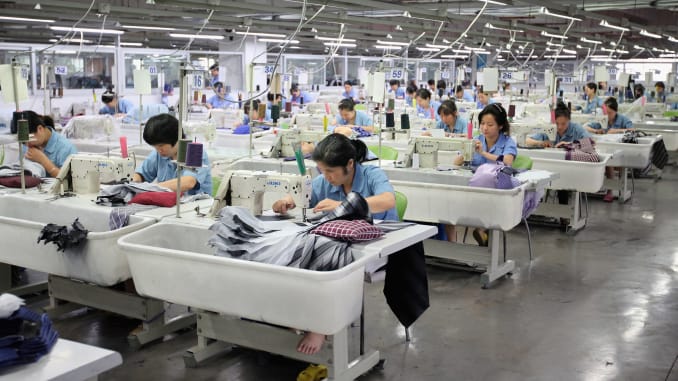In the first three quarters of 2020, after experiencing the severe impact of Sino-US economic and trade frictions and the global new crown pneumonia epidemic, China’s economic growth rate has turned from a decline to an increase, economic operations have continued to recover steadily, consumption and investment have stabilized and recovered, and exports have recovered beyond expectations. The textile industry The main economic operation indicators are gradually improving, showing a gradual upward trend. Under this situation, the overall operation of the textile machinery industry in the first three quarters has gradually recovered, and the decline in the industry’s economic operation indicators has further narrowed. Driven by the textile equipment used for epidemic prevention, exports have increased significantly. However, the global market has not yet completely out of the trough caused by the epidemic, and the overall pressure on the production and operation of the textile machinery industry remains unabated.
From January to September 2020, the total cost of textile machinery enterprises above designated size was 43.77 billion yuan, a decrease of 15.7% compared with the same period last year.
Investigation of key enterprises
The China Textile Machinery Association conducted a survey of 95 key textile machinery enterprises on their operating conditions in the first three quarters of 2020. From the summary results, the operating conditions in the first three quarters have improved compared with the first half of the year. The operating income of 50% of enterprises has declined to varying degrees. Among them, 11.83% of enterprises have orders dropped by more than 50%, and the prices of textile machinery products are generally stable and down. 41.76% of enterprises have the same inventory as last year, and 46.15% of enterprises’ capacity utilization rate Above 80%. At present, companies believe that the problems they are facing are mainly concentrated in insufficient domestic and foreign markets, pressure from rising costs, and blocked sales channels. Weaving, knitting, chemical fiber and non-woven machinery companies expect orders in the fourth quarter to improve compared to the third quarter. For the situation of the textile machinery industry in the fourth quarter of 2020, 42.47% of the surveyed companies are still not very optimistic.
Import and export situation
According to customs statistics, the cumulative total of my country’s textile machinery imports and exports from January to September 2020 was US$5.382 billion, a year-on-year decrease of 0.93%. Among them: textile machinery imports were US$2.050 billion, a year-on-year decrease of 20.89%; exports were US$3.333 billion, a year-on-year increase of 17.26%.
In the first three quarters of 2020, with the recovery of the domestic economy, among the three types of knitting machinery, the circular knitting machine and warp knitting machine industries are gradually improving, but the flat knitting machine industry is still facing greater downward pressure. The circular knitting machine industry showed a gradual upward trend in the first three quarters. In the first quarter, circular knitting machine companies were affected by the new crown epidemic, mainly focusing on orders before production, and overall sales declined; in the second quarter, as the domestic epidemic prevention and control trend improved, the circular knitting machine market gradually recovered, among which fine pitch machines Model performance is outstanding; since the third quarter, with the return of overseas weaving orders, some companies in the circular knitting machine industry have been overloaded. According to statistics from the Textile Machinery Association, the sales of circular knitting machines in the first three quarters of 2020 increased by 7% year-on-year.
Industry outlook
Overall, the economic operation of the textile machinery industry in the fourth quarter and 2021 is still facing many risks and pressures. Due to the impact of the new crown pneumonia epidemic, the global economy is facing a deep recession. The IMF predicts that the global economy will shrink by 4.4% in 2020. The world is undergoing major changes unseen in a century. The international environment is becoming increasingly complex and volatile. Uncertainty and instability have increased significantly. We will face pressure on global supply chain cooperation, a sharp decline in trade and investment, massive loss of jobs, and geopolitical conflicts. Wait a series of questions. Although the domestic and international market demand has picked up in the textile industry, it has not yet returned to a normal level, and the investment confidence in enterprise development still needs to be restored. In addition, according to the latest survey report released by the International Textile Federation (ITMF) in September this year, affected by the epidemic, the turnover of major global textile companies in 2020 is expected to drop by an average of 16%. It is expected that it will take several years to fully compensate for the new crown epidemic. Loss. In this context, the market adjustment of the textile machinery industry is still continuing, and the pressure on enterprise production and operation has not yet eased.
Post time: Dec-24-2020



